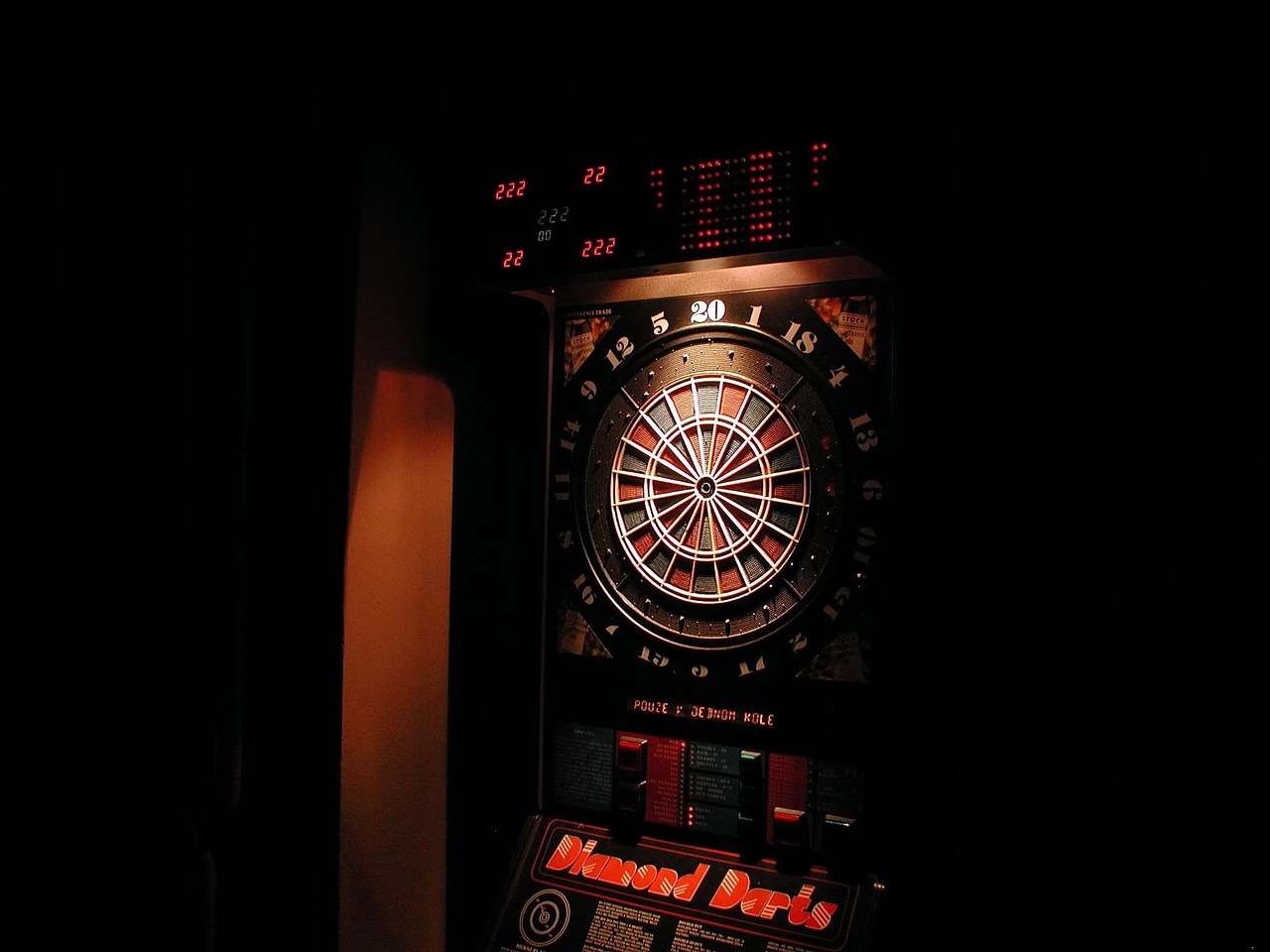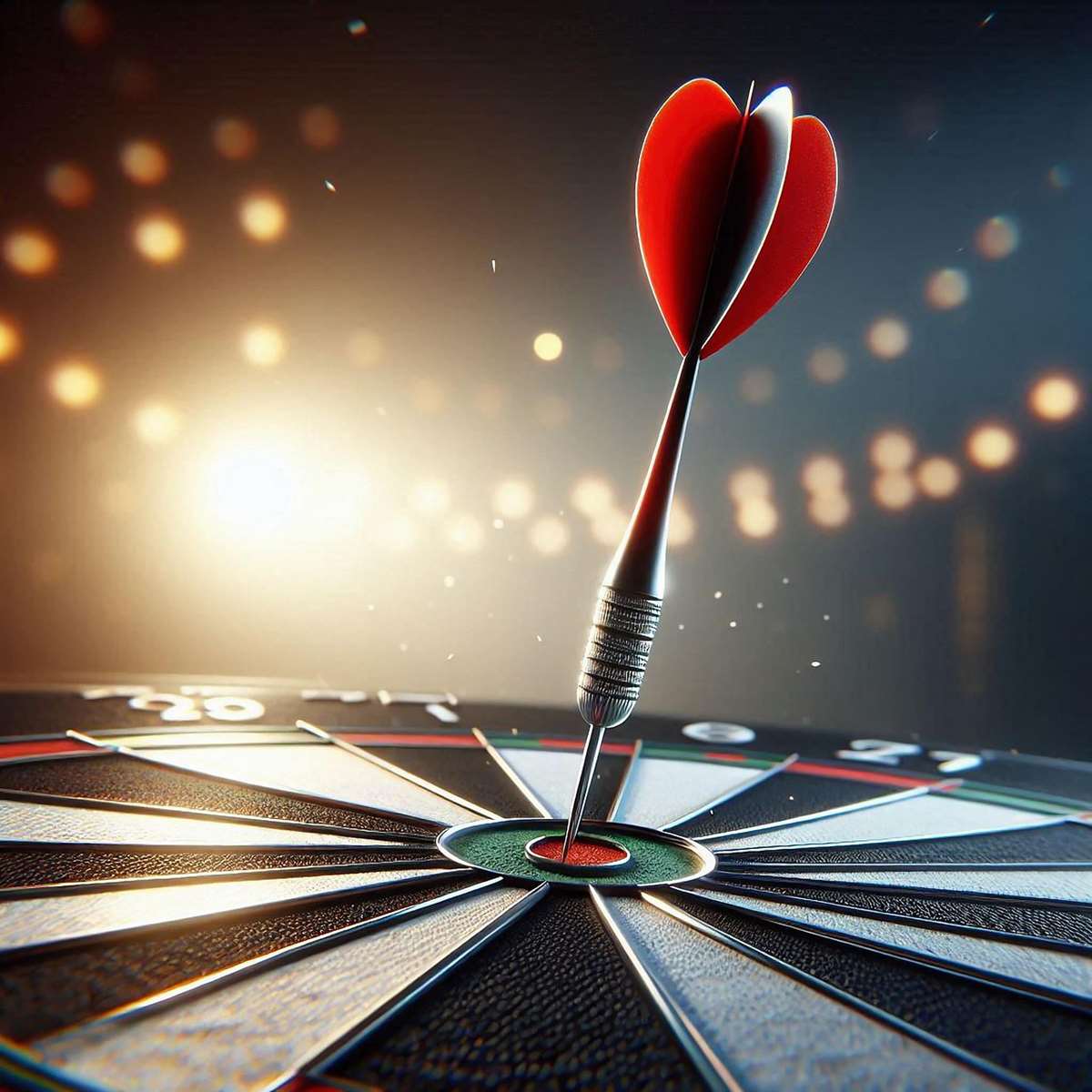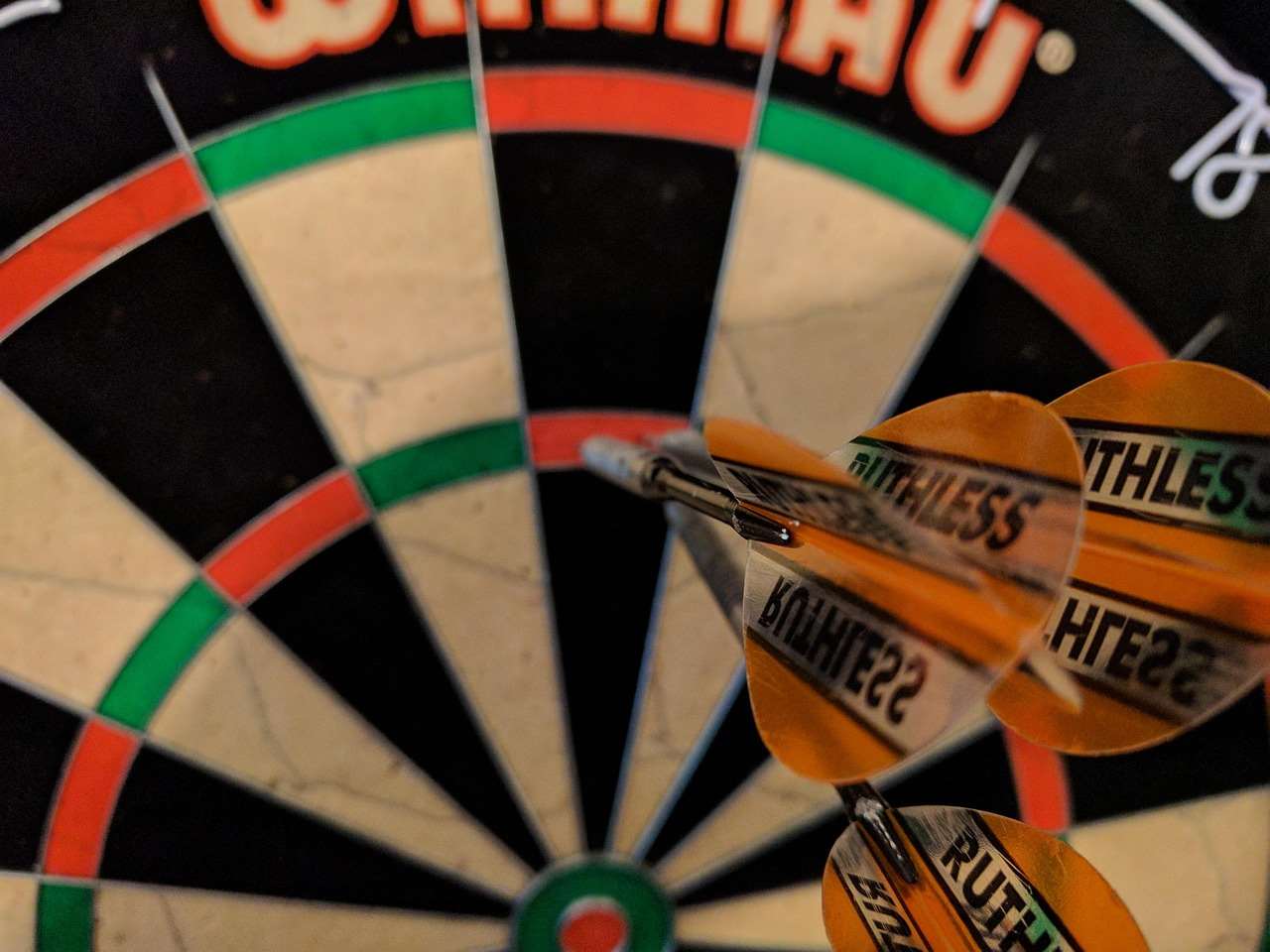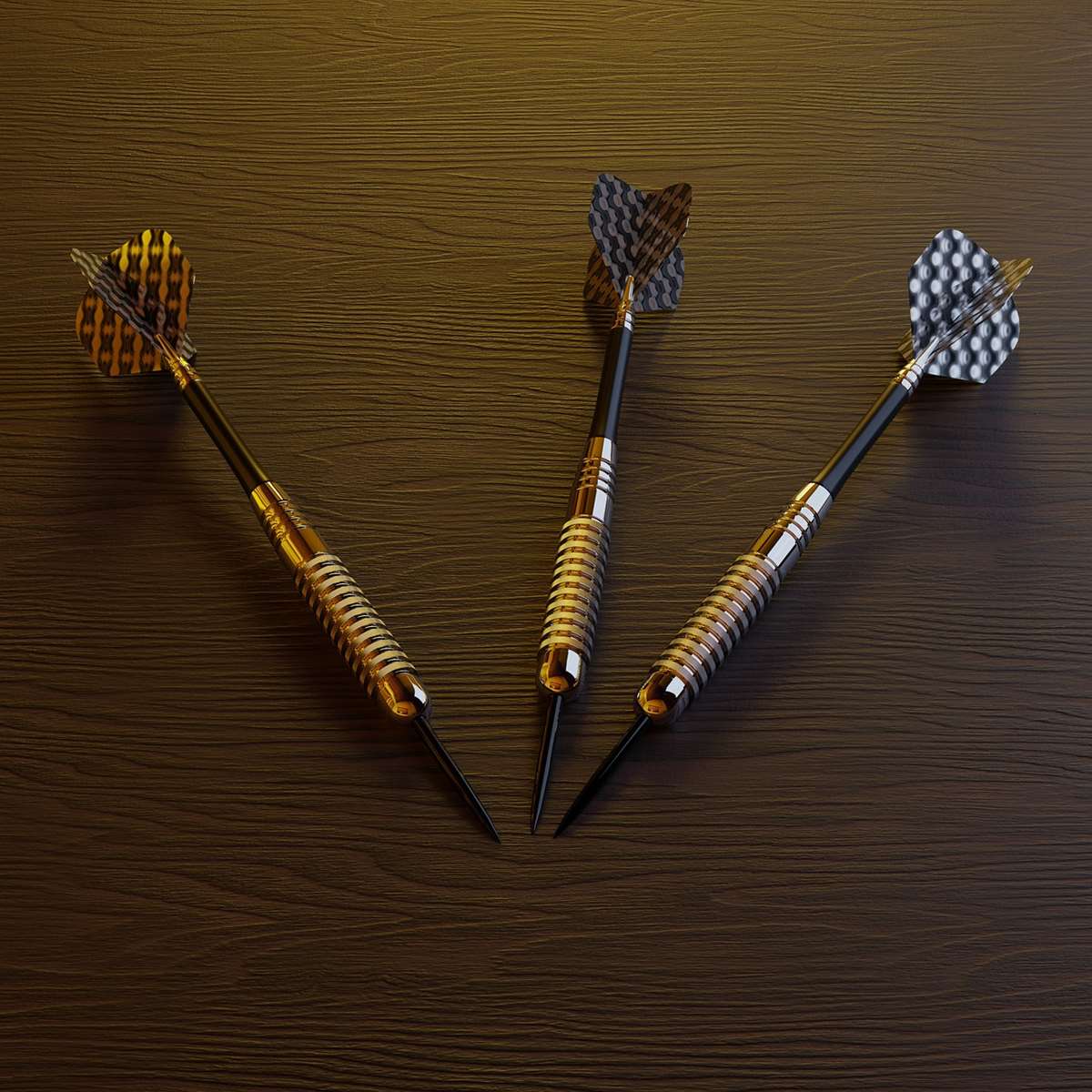Mastering your darts stance is fundamental to improving your accuracy and consistency. This article breaks down the different types of stances, offers tips for finding the right one for you, and provides guidance on perfecting your posture and balance. You’ll also learn how to troubleshoot common stance-related issues and optimize your overall throwing technique.
⚠️ Still Using Pen & Paper (or a Chalkboard)?! ⚠️
Step into the future! The Dart Counter App handles all the scoring, suggests checkouts, and tracks your stats automatically. It's easier than you think!
Try the Smart Dart Counter App FREE!Ready for an upgrade? Click above!
Understanding the Importance of Your Darts Stance
Your darts stance is more than just a way of standing; it’s the foundation upon which your entire throw is built. A stable and consistent darts stance allows you to maintain balance, alignment, and rhythm, all of which are crucial for hitting your target. Without a solid foundation, even the most skilled throwers will struggle with accuracy. Furthermore, consistently adopting the same stance for every throw programs muscle memory, reinforcing correct movement patterns.
Think of your darts stance as the bedrock of your game. Just like a building needs a strong foundation to withstand the elements, your throw needs a well-defined stance to withstand the pressure of competition. A comfortable and repeatable stance minimizes unnecessary movement and helps you to focus solely on your target.

Different Types of Darts Stances
There isn’t a single “best” darts stance, as the ideal choice depends on your individual body type, throwing style, and personal preferences. However, there are three main types of stances that most players adopt, each with its own advantages and disadvantages:
- The Front-On Stance: In this darts stance, the player faces the dartboard directly, with both feet aligned towards the oche. This stance promotes a direct line of sight to the target and can be beneficial for maintaining a consistent arm path.
- The Side-On Stance: This is arguably the most popular darts stance. The player stands with their non-throwing side facing the board. This stance can enhance stability and allows for a greater range of motion in the throwing arm. Many professional players favor this darts stance.
- The Angled Stance: This is a hybrid of the front-on and side-on stances. The player stands at an angle to the board, typically between 45 and 60 degrees. This can provide a good balance of stability and line of sight.
Experimenting with each of these stances is a good way to determine which feels most natural and comfortable for you. Consider your overall balance and ability to repeat the same throwing motion consistently when deciding on the best darts stance for your needs. Don’t be afraid to modify your position slightly to fine-tune your balance and stability.
Finding Your Perfect Darts Stance
Choosing the right darts stance is a personal journey. Here’s a step-by-step guide to help you find the one that suits you best:
- Experiment: Try all three main darts stance variations (front-on, side-on, and angled). Spend at least 30 minutes throwing from each stance to get a feel for how they impact your balance, comfort, and accuracy.
- Assess Your Balance: While throwing from each darts stance, pay attention to your balance. Do you feel stable and grounded, or do you feel like you’re leaning or swaying? A stable darts stance will allow you to maintain your position throughout your throwing motion.
- Evaluate Your Line of Sight: Consider your line of sight to the target. Does each darts stance give you a clear and unobstructed view of the board? The most advantageous darts stance will provide a direct line of sight to your target.
- Analyze Your Comfort Level: Comfort is crucial. A darts stance that feels awkward or unnatural will hinder your performance. Choose a darts stance that allows you to relax and throw with ease.
- Record Your Results: Keep track of your scores and accuracy when throwing from each darts stance. This will provide valuable data to help you determine which darts stance is most effective for you.
Remember, finding the perfect darts stance may take time and experimentation. Don’t be discouraged if you don’t find it right away. Keep practicing and refining your technique until you find a darts stance that feels comfortable, stable, and allows you to consistently hit your target. Pay attention to even slight variations in your foot positioning, weight distribution, and upper body alignment. Minute tweaks to your overall setup can make a world of difference in your accuracy.
Key Elements of a Good Darts Stance
Regardless of the specific darts stance you choose, there are several key elements that are essential for maximizing your accuracy and consistency:
- Foot Placement: The position of your feet is critical for maintaining balance and stability. Ensure that your feet are firmly planted on the ground and that your weight is evenly distributed.
- Weight Distribution: Experiment with different weight distributions to find what feels most comfortable and stable. Most players find that shifting the weight slightly forward onto the front foot can improve balance.
- Body Posture: Maintain a straight and upright posture. Avoid slouching or leaning too far forward, as this can throw off your balance and alignment.
- Head Position: Keep your head still and focused on the target. Avoid moving your head during your throwing motion.
- Shoulder Alignment: Ensure that your shoulders are aligned with the target. This will help to maintain a consistent arm path.
By paying attention to these key elements, you can develop a darts stance that is both stable and repeatable, leading to improved accuracy and consistency on the dartboard. Practicing in front of a mirror can be beneficial for observing and correcting any postural imbalances or alignment issues in your darts stance. Regularly reviewing your form can prevent bad habits from creeping into your game.

Common Mistakes in Darts Stance and How to Fix Them
Even with a good understanding of the fundamentals, it’s easy to fall into common pitfalls with your darts stance. Here are a few common mistakes and how to correct them:
- Leaning Too Far Forward: This can throw off your balance and make it difficult to maintain a consistent throwing motion. Solution: Focus on maintaining a straight and upright posture. Engage your core muscles to improve stability.
- Swaying or Moving During the Throw: Any unnecessary movement can disrupt your accuracy. Solution: Plant your feet firmly on the ground and focus on minimizing movement during your throwing motion. Practice throwing with a stationary base.
- Inconsistent Foot Placement: Varying your foot position from throw to throw can lead to inconsistencies in your technique. Solution: Establish a consistent foot placement routine and stick to it for every throw. Use a marker on the floor to help you maintain the correct position.
- Uneven Weight Distribution: Failing to distribute your weight evenly can cause you to lose balance and control. Solution: Experiment with different weight distributions to find what feels most stable and comfortable. Most players benefit from a slight forward lean.
Identifying and correcting these common mistakes can significantly improve your darts stance and overall throwing technique. Consider recording yourself throwing darts to identify any subtle movements or imbalances that you may not be aware of. A darts scoreboard app (https://dartcounterapp.com/) can also help track your progress and identify areas for improvement.
Practicing and Refining Your Darts Stance
Once you’ve found a darts stance that feels comfortable and stable, the key is to practice consistently to refine your technique. Here are some tips for practicing and improving your darts stance:
- Regular Practice: Consistent practice is essential for developing muscle memory and reinforcing correct movement patterns. Aim to practice at least a few times a week.
- Focused Practice: Don’t just throw darts aimlessly. Focus on maintaining your darts stance and repeating your throwing motion consistently.
- Slow and Deliberate Practice: Start by practicing slowly and deliberately, focusing on each element of your darts stance and throwing motion. As you become more comfortable, you can gradually increase your speed.
- Record Yourself: Recording yourself throwing darts can be a valuable tool for identifying areas for improvement. Watch the footage carefully and look for any inconsistencies in your darts stance or throwing motion.
- Seek Feedback: Ask a friend or coach to watch you throw and provide feedback. An outside perspective can help you identify areas that you may not be aware of.
Consistent practice is key to solidifying your darts stance and building a repeatable throwing motion. Focus on quality over quantity. A shorter, more focused practice session is often more effective than a longer, less concentrated one. Incorporate drills that emphasize balance and stability, such as throwing darts while standing on one leg (briefly, for balance training) or using a wobble board to challenge your equilibrium.

Advanced Darts Stance Techniques
As you progress in your darts game, you may want to explore some advanced techniques to further optimize your darts stance:
- Micro-Adjustments: Pay attention to subtle shifts in your weight distribution and body alignment. Experiment with micro-adjustments to find the perfect balance and stability.
- Pre-Throw Routine: Develop a consistent pre-throw routine that includes specific steps for setting up your darts stance. This will help you to maintain consistency and focus.
- Visualization: Visualize yourself throwing the perfect dart before each throw. This can help to improve your focus and confidence.
- Mental Preparation: Practice mental preparation techniques, such as deep breathing and positive self-talk, to help you stay calm and focused under pressure. Understanding dartboard probability can also help you strategically aim for higher-scoring segments.
These advanced techniques can help you to take your darts stance and overall game to the next level. Remember that even small improvements in your technique can make a big difference in your results. Many professional players spend countless hours refining their stances and pre-throw routines to gain a competitive edge. Even small adjustments to your upper body posture or arm position can translate to significant improvements in accuracy and consistency. The oche darts covent garden offers players a dedicated space to experiment and refine their technique, providing an environment conducive to improvement.
Adapting Your Darts Stance for Different Situations
While consistency is key, there may be times when you need to adapt your darts stance slightly to accommodate different situations:
- Uneven Flooring: If the floor is uneven, you may need to adjust your foot placement to maintain balance.
- Limited Space: If you’re playing in a confined space, you may need to modify your darts stance to avoid hitting anything.
- Fatigue: When you’re tired, your posture may start to slump. Be mindful of this and make an effort to maintain a straight and upright darts stance.
Being able to adapt your darts stance to different situations is a sign of a skilled and experienced player. Remember that the goal is always to maintain balance, stability, and a consistent throwing motion, regardless of the circumstances. Always be mindful of the darts oche throw line and make sure you’re adhering to the rules even when adjusting your stance.

The Mental Game and Your Darts Stance
Your darts stance is not just a physical position; it’s also a mental anchor. It’s the starting point for your focus, concentration, and confidence. Here’s how to leverage your darts stance for mental advantage:
- Visualization: Use your darts stance as a trigger to visualize a successful throw. Imagine the dart hitting the target with precision.
- Routine: Your pre-throw routine, culminating in your darts stance, should be a consistent and calming ritual. This helps to quiet the mind and reduce anxiety.
- Confidence: A solid, repeatable darts stance builds confidence. When you trust your foundation, you’re more likely to throw with conviction.
- Focus: Your darts stance helps to narrow your focus. It’s a physical manifestation of your commitment to the task at hand.
The mental aspect of darts is often overlooked, but it’s just as important as the physical technique. By consciously connecting your darts stance to your mental game, you can enhance your performance and achieve greater consistency. Use the predictability of your stance to help calm your nerves and stay focused on your target, and remember the feeling of a good throw. Consider trying guided meditation exercises to further improve your concentration and focus. The darts finish mat can also help with visualizing successful outcomes and practicing strategic play.
Equipment Considerations for Your Darts Stance
While your darts stance primarily concerns your body positioning, your equipment can indirectly impact its effectiveness. Here are some things to consider:
- Dartboard Height and Distance: Ensure your dartboard is hung at the correct height and distance. This ensures you aren’t contorting your body to reach the board.
- Oche Position: A non-slip oche mat or well-defined throwing line helps maintain consistent foot placement.
- Lighting: Adequate lighting is essential for clear visibility, which reduces strain and helps you maintain a proper darts stance.
- Dart Weight and Grip: Darts that are too heavy or light, or that don’t suit your grip, can cause you to compensate in your darts stance.

Optimizing your equipment setup complements your darts stance, allowing you to throw more comfortably and consistently. Make sure your dartboard is securely mounted and properly illuminated to minimize distractions and maximize your visual clarity. Take the time to experiment with different dart weights and grip styles to find the combination that feels most natural and comfortable in your hand. This will help you maintain a relaxed and consistent throwing motion.
Conclusion
Mastering your darts stance is an ongoing process that requires dedication, experimentation, and consistent practice. By understanding the different types of stances, identifying your own perfect position, and refining your technique, you can build a solid foundation for your game. Remember to pay attention to the key elements of a good darts stance, correct common mistakes, and adapt your approach as needed. Combine a strong stance with the knowledge from darts set play vs match play to truly enhance your skills. So, step up to the oche, find your balance, and throw with confidence. Now, go practice and perfect your darts stance today!
Hi, I’m Dieter, and I created Dartcounter (Dartcounterapp.com). My motivation wasn’t being a darts expert – quite the opposite! When I first started playing, I loved the game but found keeping accurate scores and tracking stats difficult and distracting.
I figured I couldn’t be the only one struggling with this. So, I decided to build a solution: an easy-to-use application that everyone, no matter their experience level, could use to manage scoring effortlessly.
My goal for Dartcounter was simple: let the app handle the numbers – the scoring, the averages, the stats, even checkout suggestions – so players could focus purely on their throw and enjoying the game. It began as a way to solve my own beginner’s problem, and I’m thrilled it has grown into a helpful tool for the wider darts community.